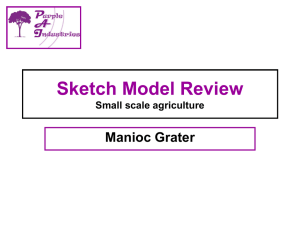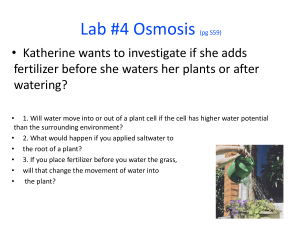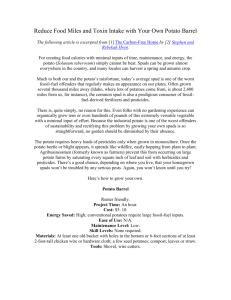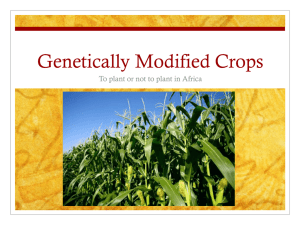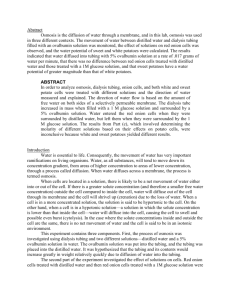Potato Connection
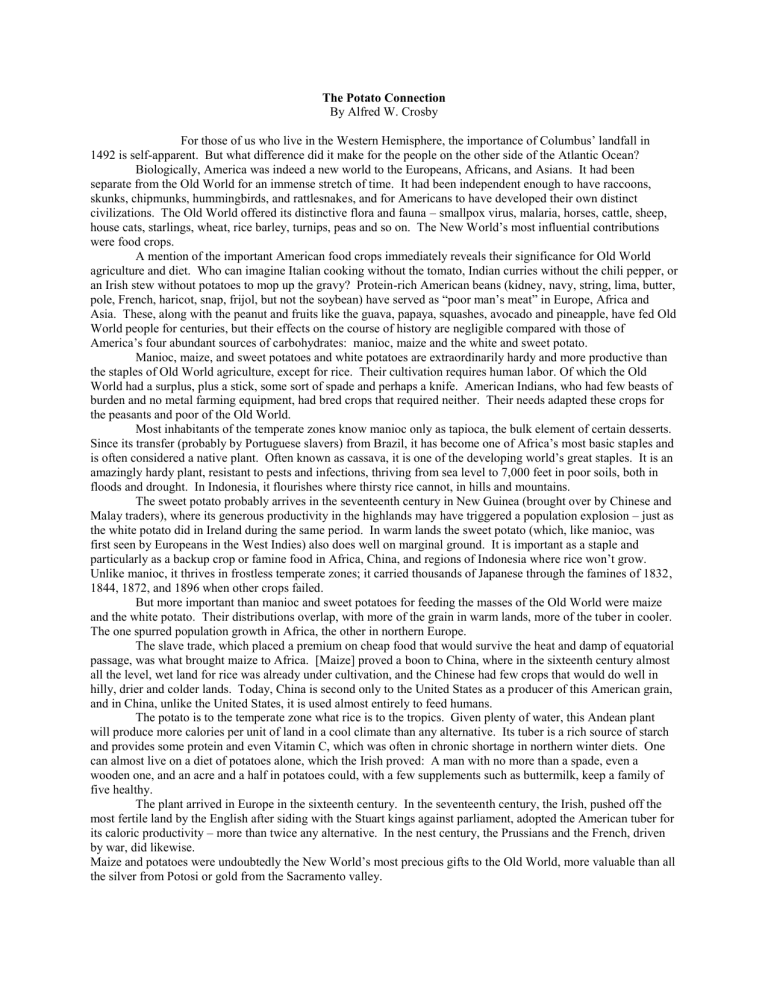
The Potato Connection
By Alfred W. Crosby
For those of us who live in the Western Hemisphere, the importance of Columbus’ landfall in
1492 is self-apparent. But what difference did it make for the people on the other side of the Atlantic Ocean?
Biologically, America was indeed a new world to the Europeans, Africans, and Asians. It had been separate from the Old World for an immense stretch of time. It had been independent enough to have raccoons, skunks, chipmunks, hummingbirds, and rattlesnakes, and for Americans to have developed their own distinct civilizations. The Old World offered its distinctive flora and fauna – smallpox virus, malaria, horses, cattle, sheep, house cats, starlings, wheat, rice barley, turnips, peas and so on. The New World’s most influential contributions were food crops.
A mention of the important American food crops immediately reveals their significance for Old World agriculture and diet. Who can imagine Italian cooking without the tomato, Indian curries without the chili pepper, or an Irish stew without potatoes to mop up the gravy? Protein-rich American beans (kidney, navy, string, lima, butter, pole, French, haricot, snap, frijol, but not the soybean) have served as “poor man’s meat” in Europe, Africa and
Asia. These, along with the peanut and fruits like the guava, papaya, squashes, avocado and pineapple, have fed Old
World people for centuries, but their effects on the course of history are negligible compared with those of
America’s four abundant sources of carbohydrates: manioc, maize and the white and sweet potato.
Manioc, maize, and sweet potatoes and white potatoes are extraordinarily hardy and more productive than the staples of Old World agriculture, except for rice. Their cultivation requires human labor. Of which the Old
World had a surplus, plus a stick, some sort of spade and perhaps a knife. American Indians, who had few beasts of burden and no metal farming equipment, had bred crops that required neither. Their needs adapted these crops for the peasants and poor of the Old World.
Most inhabitants of the temperate zones know manioc only as tapioca, the bulk element of certain desserts.
Since its transfer (probably by Portuguese slavers) from Brazil, it has become one of Africa’s most basic staples and is often considered a native plant. Often known as cassava, it is one of the developing world’s great staples. It is an amazingly hardy plant, resistant to pests and infections, thriving from sea level to 7,000 feet in poor soils, both in floods and drought. In Indonesia, it flourishes where thirsty rice cannot, in hills and mountains.
The sweet potato probably arrives in the seventeenth century in New Guinea (brought over by Chinese and
Malay traders), where its generous productivity in the highlands may have triggered a population explosion – just as the white potato did in Ireland during the same period. In warm lands the sweet potato (which, like manioc, was first seen by Europeans in the West Indies) also does well on marginal ground. It is important as a staple and particularly as a backup crop or famine food in Africa, China, and regions of Indonesia where rice won’t grow.
Unlike manioc, it thrives in frostless temperate zones; it carried thousands of Japanese through the famines of 1832,
1844, 1872, and 1896 when other crops failed.
But more important than manioc and sweet potatoes for feeding the masses of the Old World were maize and the white potato. Their distributions overlap, with more of the grain in warm lands, more of the tuber in cooler.
The one spurred population growth in Africa, the other in northern Europe.
The slave trade, which placed a premium on cheap food that would survive the heat and damp of equatorial passage, was what brought maize to Africa. [Maize] proved a boon to China, where in the sixteenth century almost all the level, wet land for rice was already under cultivation, and the Chinese had few crops that would do well in hilly, drier and colder lands. Today, China is second only to the United States as a producer of this American grain, and in China, unlike the United States, it is used almost entirely to feed humans.
The potato is to the temperate zone what rice is to the tropics. Given plenty of water, this Andean plant will produce more calories per unit of land in a cool climate than any alternative. Its tuber is a rich source of starch and provides some protein and even Vitamin C, which was often in chronic shortage in northern winter diets. One can almost live on a diet of potatoes alone, which the Irish proved: A man with no more than a spade, even a wooden one, and an acre and a half in potatoes could, with a few supplements such as buttermilk, keep a family of five healthy.
The plant arrived in Europe in the sixteenth century. In the seventeenth century, the Irish, pushed off the most fertile land by the English after siding with the Stuart kings against parliament, adopted the American tuber for its caloric productivity – more than twice any alternative. In the nest century, the Prussians and the French, driven by war, did likewise.
Maize and potatoes were undoubtedly the New World’s most precious gifts to the Old World, more valuable than all the silver from Potosi or gold from the Sacramento valley.





